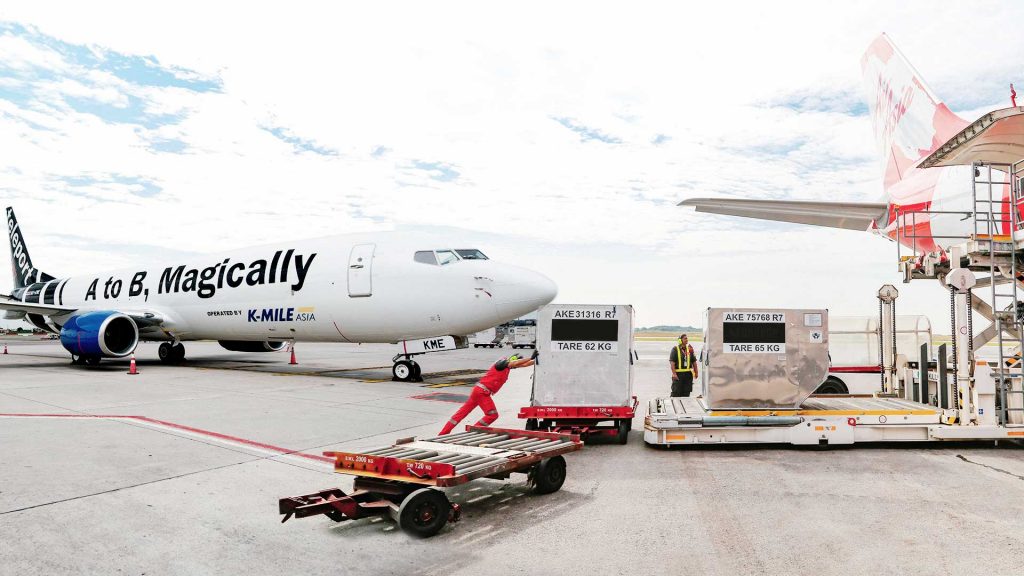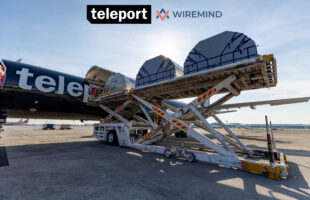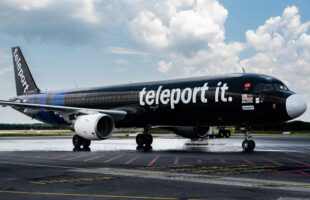

Payload Asia talks to Teleport’s chief operating officer Adrian Loretz as he gives us a brief background of its operations in Malaysia and the region as the AirAsia unit looks to expand its ‘unrivaled network’ across the Asia Pacific.
Can you give us a brief background of Teleport’s air cargo network?
At the start of 2020, Teleport set out to build a cargo-only network across the key air cargo lanes in the region to cater for the increasing e-commerce and general cargo demand.
To date, Teleport is utilizing a total of eight (8) dedicated AirAsia passenger aircraft for cargo-only flights which includes the use of passenger cabins. We have also modified an A320 AirAsia passenger aircraft with seats removed for increased capacity and introduced our dedicated Freighter into our fleet.
As part of the greater Airasia ecosystem, Teleport gets a head start for both domestic and international with access to a network of 232 cities across Southeast Asia.
Teleport has an unparalleled reach across Southeast Asia – 37 key cities, 49 secondary cities and 146 extended cities. The group currently has the biggest and most frequent network in Asia, and a total of 252 aircraft under its belt.
With direct access to the unrivaled Airasia Group network, best in class technology and a commitment to enabling last mile, door-to-door commerce anywhere in Asean within 24 hours, Teleport has put in place the right foundations to truly disrupt the cargo industry in Asean.
 What can you say about the current air cargo capacity (and rates) in and out of Malaysia?
What can you say about the current air cargo capacity (and rates) in and out of Malaysia?
Demand in and out of Malaysia and other SEA countries remains strong, and the supply of passenger belly capacity has not yet recovered enough to cover that demand sufficiently.
We expect that this demand overhang and the resulting higher yields will continue to be in place for a few years to come, and Teleport is filling the gap left from missing passenger operation with dedicated cargo capacity, both from passenger aircrafts as well as dedicated freighters which will go live in Malaysia in 2022.
From an air cargo and logistics perspective, what would be a key factor to grow Malaysia’s air cargo industry?
The growth of air cargo in the Southeast Asia market, along with the increase in e-commerce demand and technological developments in both new aircraft technologies and the digitisation of the industry has always been at the front of Teleport’s focus.
Key to compete with other hubs like Singapore or Hong Kong is the infrastructure to handle the cargo volumes and specialized products, as well as seamless and digital processes to deal with customs processes.
How much do e-commerce shipments and parcels contribute to Teleport’s business? What other types of cargo can the company accommodate?
e-commerce is a rapidly growing revenue stream for Teleport, both as a cargo carrier for the larger players as well as the delivery product which we offer in our own right. We are focusing a large part of our resources on playing a key part in that supply chain and expect that this segment will continue to significantly grow over the coming years.
Why is there a heightened focus on SMEs particularly from logistics players?
During the pandemic, SMEs had to make fast changes and the function of logistics became all the more important, moving towards the centre of SMEs’ relationships with suppliers and customers.
Unfortunately, SMEs often don’t have the infrastructure to create and maintain the logistics of delivery efficiently, cost effectively and on time—and some make the mistake of trying to do it themselves.
Without the resilience, flexibility and agility of SMEs, the future of our economy would look stark. Which is why, logistics services providers have a great business opportunity at hand in the SME market since it is an underserved sector
How important are local players, particularly in the last mile? How does Teleport ensure that SLAs are met with third party vendors?
The last mile is the trickiest but also the most important part of the delivery process. At Teleport, we assign specific teams to communicate with our vendors, our riders and also manage the in and out operations of the deliveries. This is to ensure that every team and every party is in constant communication to ensure parcels are delivered safely and on time.
What are the company’s plans to grow the business?
Our plan is to focus on growth – we have plans to expand our freighter fleet to 6 aircraft and our logistics footprint to start with, which will enable us to serve more routes as well.
We are always on the lookout for expansion of our cargo business by developing and enhancing our people and technology. Acquisitions need to make sense and fit our strategic shift from a pure air freight logistics provider to a complete multimodal operator.









